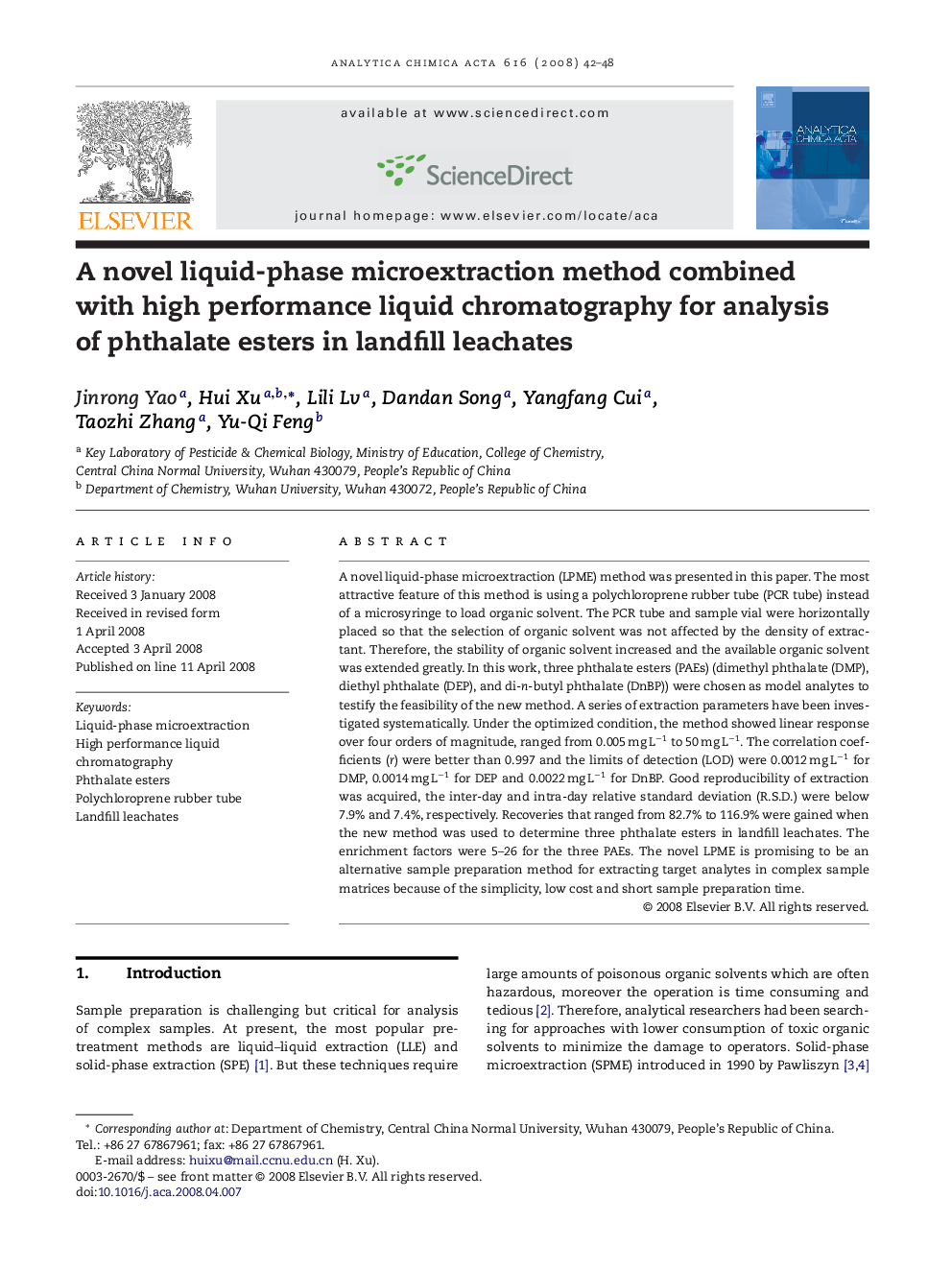| Article ID | Journal | Published Year | Pages | File Type |
|---|---|---|---|---|
| 1169537 | Analytica Chimica Acta | 2008 | 7 Pages |
A novel liquid-phase microextraction (LPME) method was presented in this paper. The most attractive feature of this method is using a polychloroprene rubber tube (PCR tube) instead of a microsyringe to load organic solvent. The PCR tube and sample vial were horizontally placed so that the selection of organic solvent was not affected by the density of extractant. Therefore, the stability of organic solvent increased and the available organic solvent was extended greatly. In this work, three phthalate esters (PAEs) (dimethyl phthalate (DMP), diethyl phthalate (DEP), and di-n-butyl phthalate (DnBP)) were chosen as model analytes to testify the feasibility of the new method. A series of extraction parameters have been investigated systematically. Under the optimized condition, the method showed linear response over four orders of magnitude, ranged from 0.005 mg L−1 to 50 mg L−1. The correlation coefficients (r) were better than 0.997 and the limits of detection (LOD) were 0.0012 mg L−1 for DMP, 0.0014 mg L−1 for DEP and 0.0022 mg L−1 for DnBP. Good reproducibility of extraction was acquired, the inter-day and intra-day relative standard deviation (R.S.D.) were below 7.9% and 7.4%, respectively. Recoveries that ranged from 82.7% to 116.9% were gained when the new method was used to determine three phthalate esters in landfill leachates. The enrichment factors were 5–26 for the three PAEs. The novel LPME is promising to be an alternative sample preparation method for extracting target analytes in complex sample matrices because of the simplicity, low cost and short sample preparation time.
